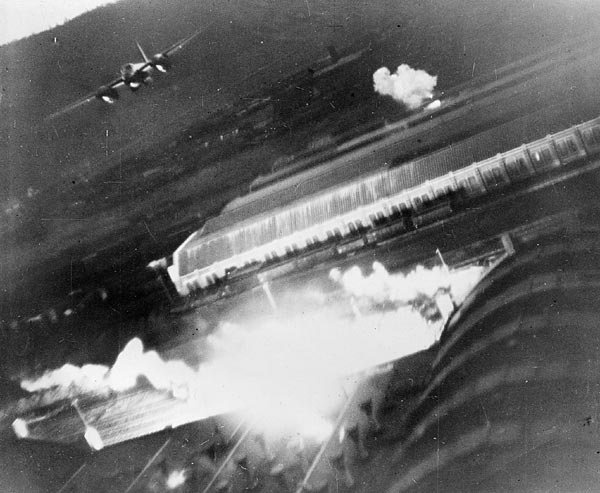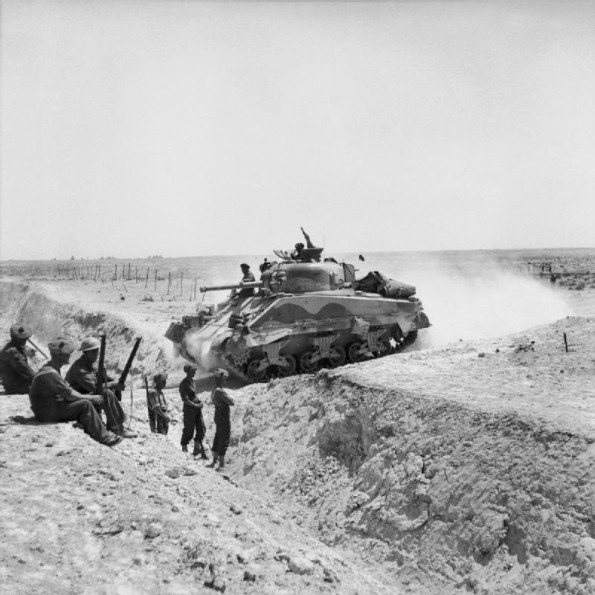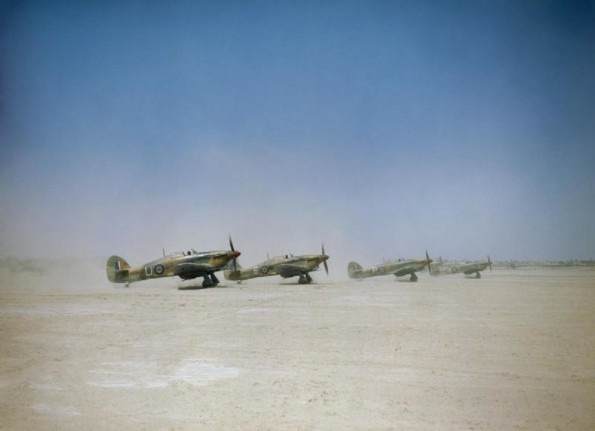Air Operations, Bismarcks
43rd Heavy Bomb Group B-17s mount individual attacks against Cape Gloucester and Gasmata.
[Air Operations, CBI
BURMA- 6 7th Heavy Bomb Group B-24s attack a bridge at Pazundaung.
Air Operations, Europe
BOMBER COMMANDDaylight Ops:
- 8 Mosquitos attack the Namur railway workshops without a loss.
Low-Level Attack |
 |
- 47 aircraft lay mines off the Biscay ports.
- 1 Halifax and 1 Wellington are lost.
Hitler Attempts to Persuade Mussolini |
 |
Air Operations, Mediterranean
301st Heavy Bomb Group B-17s attack a convoy of Axis transports and freighters near Bizerte. The largest ship, filled with munitions, is hit and blow clean out of the water. The explostion is large enough to damage several of the bombers. The bombers are attacked by Luftwaffe fighters as the bombers withdraw, but none are lost. 9 crewmen are wounded. Bomber gunner claim 8 German fighter shot down, plus 3 probables.
An Allied recon plane locates 2 of the Italian Navy's 3 remaining cruisers, the Trieste and the Gorizia, behind a wall of submarine nets in a cove near Maddalena in northern Sardinia. All available NAAF B-17s armed with 1,000-pound bombs are sent with a heavy long-range fighter escort. The attack force is divided into three groups; one mixed group of 24 B-17s is sent to bomb the harbor installations; one group of 36 97th Bomb Group B-17s is sent after the Gorizia; one group of 24 301st Heavy Bomb Group B-17s is sent after the Trieste. The harbor facilities and the Gorizia are badly damaged, and the Trieste is sunk by several direct hits.
[Air Operations, New Guinea
- 43rd Heavy Bomb Group B-17s mount individual attacks against Finschhafen.
- V Bomber Command B-25s attack Salamaua and nearby antiaircraft batteries.
Air Operations, Sicily
- NAAF B-17s attack port facilities and shipping at Trapani.
- IX Bomber Command B-24s attack the ferry terminal at Messina.
Air Operations, Tunisia
- NATBF A-20s and B-25s attack Enfidaville Airdrome, La Fauconnerie Airdrome, and the El Djem landing ground.
- In direct support of a new British 8th Army offensive, IX Bomber Command B-25s mount two separate missions against German Army troop concentrations along the Oued el-Akarit River.
Battle of the Atlantic
- U-167 is attacked twice by aircraft, Hudsons 'W' of 'L' of No 233 Squadron. The U-boat sustained severe damage in the two attacks and the Captain is badly wounded. The submarine is scuttled east of Grand Canary Island as the crew made their way ashore for internment.
- Liberator 'R' of No 86 Squadron sights a surfaced U-167 while on patrol 18 miles from convoy HX-231. The aircraft carries out two attacks with depth charges as the submarine dived. An oil slick subsequently forms on the surface ove the spot where the U-boat had sunk.
|
|
Gulf of Mexico
U-185 attacks Mobile, Alabama-bound Convoy GTMO-83 and sinks the US freighter John Sevier (7176t). The US destroyer Bennett (DD-473) rescues all 39 crew members and the 17-man Armed Guard and one passenger.
[North Africa
TUNISIAIn the Battle of Wadi Akarit the 8th Army breaks through the Axis lines south of Sfax, but fails to exploit its initial success.
In the US II Corps area, while the 1st and 9th Divs press forward toward the general line intended originally for the first phase, Task Force Benson, 1st Armored Div, follows up closely and reaches the road juntion northeast of Djebel Berda. As a diversion in the Maknassy area, Combat Command B attacks Djebel Maïzila, and Combat Command C demonstrates at Djebe Naemia. After nightfall the enemy disengages and for the most part withdraws eastward under cover of artillery fire. The II Corps is ordered to apply maximum pressure on the 7th.
The British 8th Army begins an assault on the Wadi Akarit line, from which the enemy begins withdrawing during the night. The XXX Corps jumps off before dawn with the 51st Div on the right, the 50th Div in the center, and the Indian 4th Div on the left. Progress is made, particularly on the flanks, but tenacious resistance and counterattacks prevent a complete breakthrough. The X Corps, which is to drive through the XXX Corps' bridgehead, moves forward at noon. The New Zealand 2nd Div, which reverts to the corps, leads the drive.
|
|
Occupied Soviet Union
A Soviet Commission reports on Nazi atrocities against Russian soldiers, civilians and Jews in the Rzhev-Gzhatsk-Vyazma 'triangle' and names 23 of the perpetrators.
[South Pacific
After the disastrous Battle of the Bismarck Sea (see March 3-5), Yamamoto feels that some action on a huge scale is necessary to halt the American pressure in every sector. In view of Japanese losses in warships and transports there can be no question of a naval operation, nor of an operation on land. The only possible answer is a great air attack 'which will weaken the claws of the American eagle'. The Japanese bases in New Guinea and the Solomons are under threat. It is clear that the Americans are aiming at the capture of the northern Solomons and the important base of Rabaul, in New Britain. The fall of Rabaul would give the enemy a jumping-off place for an attack on the Philippines and might allow them to cut off Truk, the key point of the Japanese imperial forces in the Pacific, their 'Pearl Harbor'. Since there are many signs that the American offensive is to be launched soon, Yamamoto decides to act at aonce. He concentrates all available air formations at Rabaul, at Kavieng in New Ireland and at Bium in the south of Bougainville. Even the aircraft from the aircraft carriers are transferred to land bases to take part in Operation A. 350 aircraft are assembled and regrouped, ready for action.
[
